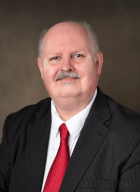JAPAN REPORT
Honda said it plans to produce a motor-driven electric motorcycle for individuals in Japan by the end of 2023. This will be the first time Honda produces a product for the public in Japan.
Overall, Honda said it plans to launch more than 10 models of electric motorcycles worldwide by 2025. Their goal is to increase overall sales, including pedal-powered and electric bicycles, mainly in China and India. The company plans to increase its sales to 3.5 million units worldwide by 2030, more than 20 times the 2021 level.
The EM1e electric scooter was unveiled March 17, 2023, in Japan. It has a cruising range of approximately 40 km and uses replaceable batteries. The price is expected to be higher than gasoline-powered scooters with a displacement of about 50 liters. The company plans to launch the moped equipped with pedals that can be pedaled with the feet, and five other motorized bicycle models in China, Southeast Asia, Europe, and Japan by 2024.
Electric motorcycles face the problem that on-board batteries are expensive and production costs are more than 50% higher than those of internal combustion engine models. Honda plans to increase its global sales to 1 million units by 2026, and further to 3.5 million units by 2030. However, demand for internal combustion engines is strong in emerging countries, and Honda intends to maintain its annual production capacity of 20 million two-wheeled gasoline vehicles until 2030.
Source: The Nikkei
PSR Analysis: Honda is finally bringing an electric model to the consumer market. Yamaha already sells the E-Vino to individuals. Harley is spinning off its electric motorcycle division to attract investment, and India’s Hero will release its VIDA electric motorcycle in 2022 and is working with a U.S. company to develop new products.
All companies are very ambitious about electric motorcycles, but there are still many challenges to be overcome before they become widespread. As a first mover example, Taiwan’s Gogoro is doing well by developing a network of battery exchange stations. Honda’s EM1e is equipped with a single replaceable battery, and by taking the battery pack home after use and recharging it at a power outlet at home, the vehicle can start running the next day with a fully charged battery.
The handle makes the battery look easy to carry, but at 10.3 kg, it may be difficult for women to accept it. The spread of battery exchange station networks like those in Taiwan has just begun in Japan, and charging stations in urban areas are still in their infancy. PSR
Akihiro Komuro is Research Analyst, Far East and Southeast Asia for Power Systems Research




